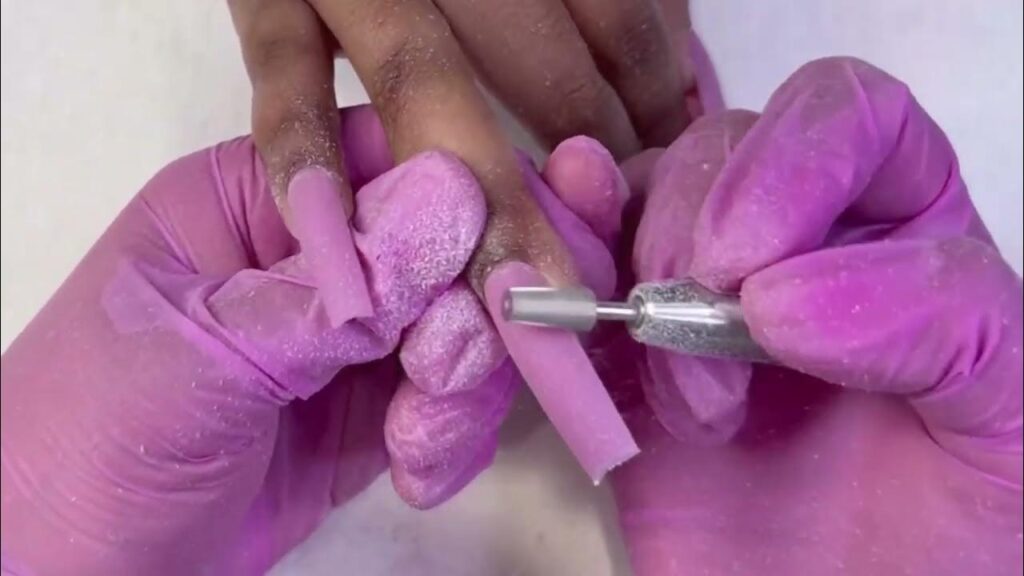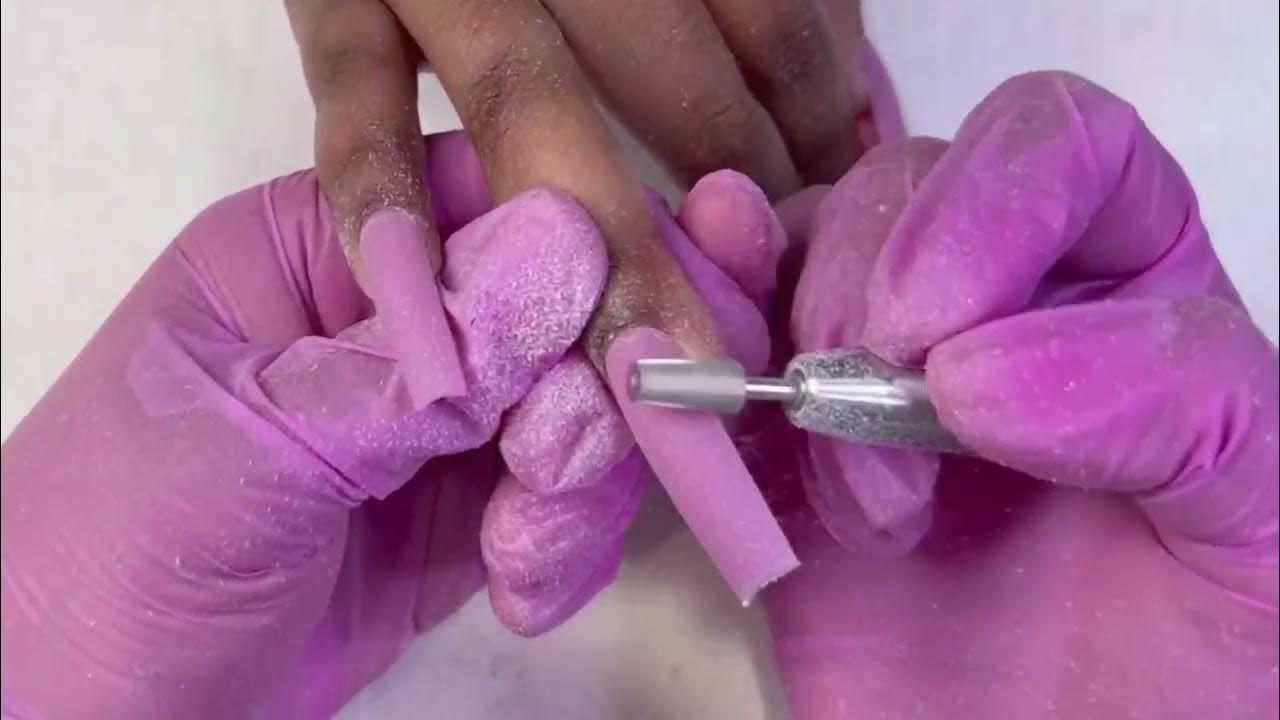
What Does Filling Acrylic Nails Mean? A Comprehensive Guide
Acrylic nails are a popular choice for those seeking durable and aesthetically pleasing manicures. However, like all nail enhancements, they require maintenance. Understanding what filling acrylic nails means is crucial for preserving their appearance and preventing damage to your natural nails. This comprehensive guide will delve into the process of filling acrylic nails, why it’s necessary, how it’s done, and what to expect. We’ll cover everything you need to know to keep your acrylic nails looking their best and maintaining healthy natural nails underneath.
Why Filling Acrylic Nails is Essential
As your natural nails grow, a gap appears between the cuticle area and the acrylic overlay. This gap not only looks unsightly but also creates a potential entry point for moisture and bacteria, increasing the risk of infection. Additionally, the lifting of the acrylic can weaken the structure, making it more prone to breakage or lifting further. Filling acrylic nails addresses these issues by seamlessly blending the new growth with the existing acrylic, restoring the nail’s smooth and uniform appearance.
- Preventing Lifting: Lifting can cause air pockets, leading to trapping of moisture and potential fungal infections.
- Maintaining Structural Integrity: Filling reinforces the acrylic, preventing breakage and ensuring the nail remains strong.
- Aesthetic Appeal: Regular fills keep your acrylic nails looking fresh and well-maintained.
- Preventing Damage to Natural Nails: Lifting acrylics can pull on and damage the natural nail, leading to thinning and weakness.
The Process of Filling Acrylic Nails: A Step-by-Step Guide
The process of filling acrylic nails typically involves the following steps:
Preparation
The nail technician will begin by sanitizing their hands and yours. Then, they will gently push back your cuticles and lightly buff the area of new nail growth to remove the shine. This creates a rough surface for the new acrylic to adhere to properly. They will also clean and dehydrate the nail surface to ensure optimal adhesion.
Acrylic Application
The technician will then mix a small amount of acrylic powder with a liquid monomer to create a workable paste. This mixture is carefully applied to the area of new growth, blending it seamlessly with the existing acrylic. The goal is to create a smooth, even surface without any visible lines or bumps.
Shaping and Filing
Once the acrylic has dried and hardened, the technician will use a file to shape the nail to your desired form. This may involve shortening the length, refining the edges, or adjusting the overall shape. They will also smooth out any imperfections or unevenness in the acrylic. Proper shaping is essential for both aesthetics and durability.
Buffing and Smoothing
After shaping, the technician will use a buffer to smooth the surface of the acrylic nail, removing any scratches or imperfections left by the file. This creates a polished, glossy finish that is ready for the final touches. Buffing also helps to blend the new acrylic seamlessly with the old.
Finishing Touches
Finally, the technician will apply a top coat to seal the acrylic and protect it from damage. This also adds shine and enhances the overall appearance of the nails. The top coat is typically cured under a UV or LED lamp to harden and create a durable finish. Cuticle oil is then applied to moisturize the skin around the nails.
How Often Should You Get Acrylic Fills?
The frequency of filling acrylic nails depends on the rate of your natural nail growth. Generally, fills are recommended every two to three weeks. Waiting longer than this can increase the risk of lifting, breakage, and infection. Regular fills will keep your acrylic nails looking their best and prevent potential problems.
If you notice any lifting, cracking, or discoloration before your scheduled fill, it’s important to address it promptly. Contact your nail technician to schedule an appointment as soon as possible to prevent further damage.
Potential Risks and Considerations
While filling acrylic nails is a relatively safe procedure, there are some potential risks and considerations to keep in mind:
- Allergic Reactions: Some individuals may be allergic to the acrylic monomer or other chemicals used in the process.
- Infections: Improper sanitation or lifting of the acrylic can lead to bacterial or fungal infections.
- Damage to Natural Nails: Over-filing or aggressive removal of acrylic can weaken and damage the natural nails.
- Chemical Exposure: Prolonged exposure to acrylic chemicals can be harmful.
To minimize these risks, it’s essential to choose a reputable nail salon with experienced and qualified technicians who follow proper sanitation protocols. It’s also important to communicate any concerns or allergies to your technician before the procedure.
Choosing the Right Nail Technician
Selecting a skilled and experienced nail technician is crucial for a successful acrylic fill. Look for technicians who are licensed and certified, and who have a good reputation for providing quality services. Ask for recommendations from friends or family, or read online reviews to get an idea of their expertise. A good technician will prioritize your safety and satisfaction, and will be able to address any concerns you may have.
Observe the salon’s cleanliness and sanitation practices. Ensure that all tools and equipment are properly sterilized and that the technician uses fresh or disposable supplies whenever possible. A clean and well-maintained environment is essential for preventing infections.
DIY vs. Professional Acrylic Fills
While it’s possible to filling acrylic nails at home, it’s generally recommended to have it done by a professional. Professional nail technicians have the training, experience, and tools necessary to perform the procedure safely and effectively. They can also ensure a seamless and long-lasting finish.
Attempting to fill acrylic nails at home without proper knowledge and skills can lead to uneven application, damage to the natural nails, and an increased risk of infection. If you’re not confident in your abilities, it’s best to leave it to the professionals. [See also: Acrylic Nail Removal At Home Guide]
Maintaining Your Acrylic Nails After a Fill
After getting your acrylic nails filled, it’s important to take proper care of them to prolong their lifespan and maintain their appearance. Here are some tips for maintaining your acrylic nails:
- Moisturize Regularly: Apply cuticle oil to your cuticles and the skin around your nails daily to keep them hydrated.
- Avoid Harsh Chemicals: Wear gloves when doing household chores or working with harsh chemicals.
- Be Gentle: Avoid using your nails as tools to open things or scrape surfaces.
- Schedule Regular Fills: Stick to your recommended fill schedule to prevent lifting and breakage.
- Protect From Water: Prolonged exposure to water can weaken the acrylic.
Troubleshooting Common Acrylic Nail Problems
Even with proper care, you may encounter some common problems with your acrylic nails. Here are some tips for troubleshooting these issues:
- Lifting: If you notice any lifting, contact your nail technician immediately. Do not try to glue the acrylic back down yourself.
- Breakage: If your acrylic nail breaks, file down any sharp edges and schedule an appointment for a repair.
- Discoloration: Discoloration can be caused by exposure to certain products or chemicals. Try using a whitening toothpaste or nail polish to brighten the nails.
- Infection: If you suspect an infection, seek medical attention immediately.
The Future of Acrylic Nail Technology
The beauty industry is constantly evolving, and acrylic nail technology is no exception. Researchers and manufacturers are continuously developing new and improved acrylic formulations that are stronger, more durable, and less harmful to the natural nails. Advancements in application techniques and tools are also making the process more efficient and precise. As technology advances, we can expect to see even more innovative and user-friendly acrylic nail products in the future.
Understanding filling acrylic nails is essential for anyone who wants to maintain the beauty and health of their acrylic enhancements. By following the tips and guidelines outlined in this guide, you can ensure that your acrylic nails look their best and that your natural nails remain healthy and strong. Remember to choose a reputable nail salon, follow proper maintenance practices, and address any problems promptly. With proper care, your acrylic nails can be a beautiful and long-lasting addition to your personal style.

